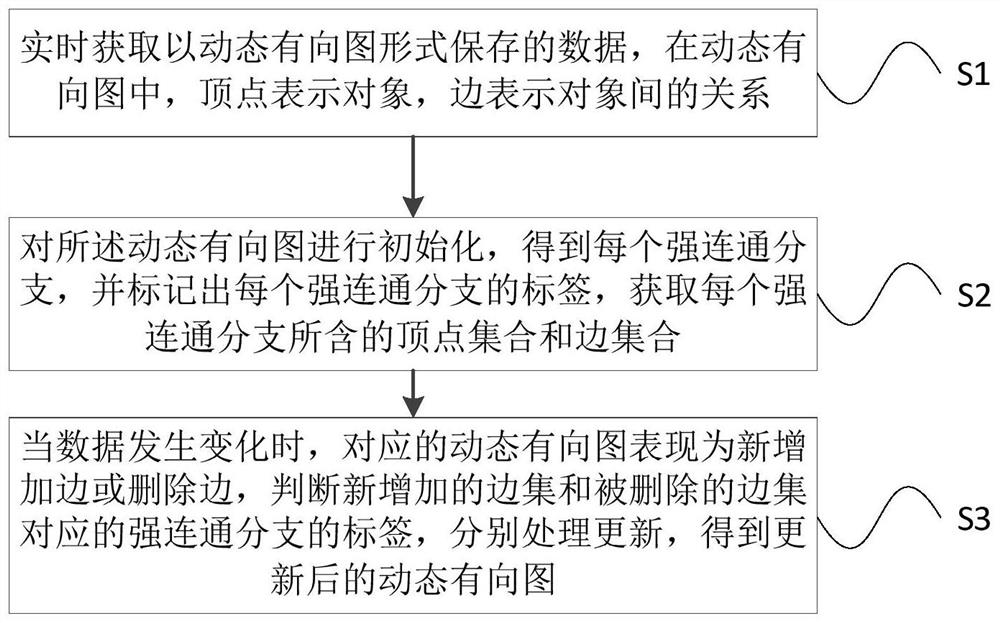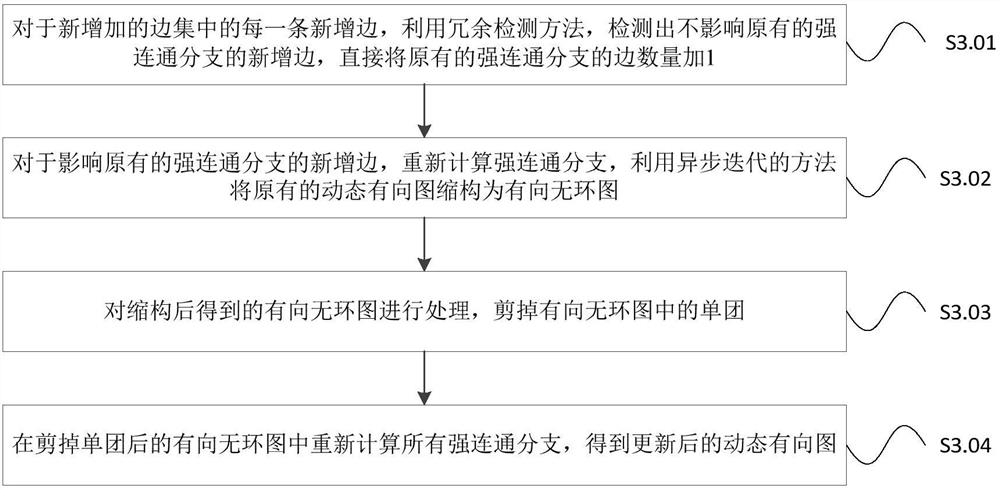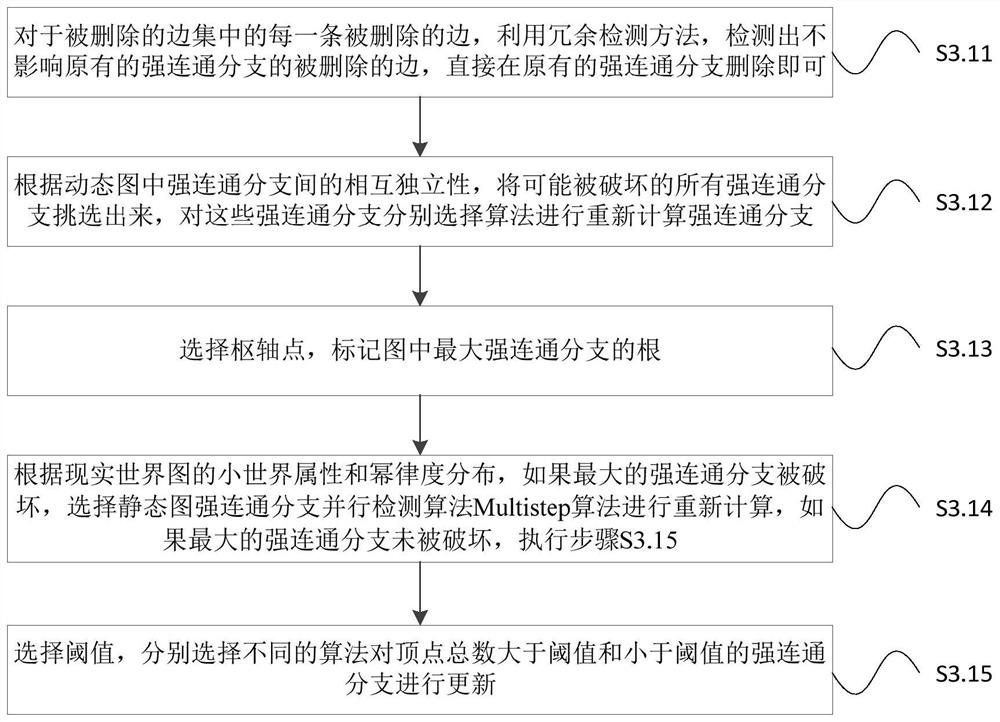Data maintenance method and system stored in dynamic directed graph form
A data maintenance and directed graph technology, applied in the field of data maintenance, can solve the problems of accelerating the algorithm convergence speed, not choosing a pruning strategy, and the efficiency needs to be further improved, so as to achieve the effect of reducing computing expenses and achieving good performance.
- Summary
- Abstract
- Description
- Claims
- Application Information
AI Technical Summary
Problems solved by technology
Method used
Image
Examples
Embodiment 1
[0049] This embodiment provides a data maintenance method saved in the form of a dynamic directed graph, such as figure 1 shown, including the following steps:
[0050] S1: Real-time acquisition of data saved in the form of a dynamic directed graph. In a dynamic directed graph, vertices represent objects and edges represent relationships between objects;
[0051] S2: Initialize the dynamic directed graph, obtain each strongly connected branch, and mark the label of each strongly connected branch, and obtain the vertex set and edge set contained in each strongly connected branch;
[0052] S3: When the data changes, the corresponding dynamic directed graph is represented as a newly added or deleted edge. Determine the labels of the strongly connected branches corresponding to the newly added edge set and the deleted edge set, process the update respectively, and get the updated The dynamic directed graph of
[0053]In many real-world networks, such as social networks, Wikipedi...
Embodiment 2
[0058] On the basis of Embodiment 1, this embodiment provides a method for processing a newly added edge set and a deleted edge set.
[0059] For the newly added edge set, choose the method of redundancy detection and asynchronous iteration to deal with the newly added edge set, such as figure 2 shown, specifically:
[0060] S301: For each newly added edge in the newly added edge set, use the redundant detection method to detect the newly added edge that does not affect the original strongly connected branch, and directly increase the number of edges of the original strongly connected branch by 1;
[0061] S302: For the newly added edge that affects the original strongly connected branch, recalculate the strongly connected branch, and use the asynchronous iteration method to reduce the original dynamic directed graph into a directed acyclic graph;
[0062] S303: Process the directed acyclic graph obtained after reduction, and cut out the single group in the directed acyclic ...
Embodiment 3
[0088] This embodiment provides a data maintenance system saved in the form of a dynamic directed graph, such as Figure 4 shown, including:
[0089] A data acquisition module, which is used for real-time acquisition of data saved in the form of a dynamic directed graph, in which the vertices represent data individuals, and thus represent the connection between data individuals;
[0090] An initialization module, which is used to initialize the dynamic directed graph, obtain each strongly connected branch, and mark the label of each strongly connected branch, and obtain the vertex set and edge contained in each strongly connected branch gather;
[0091] The processing and updating module is used for selecting the methods of redundancy detection and asynchronous iteration to process the newly added edge set and the deleted edge set respectively, and obtain the updated dynamic directed graph.
[0092] The same or similar reference numbers correspond to the same or similar part...
PUM
 Login to View More
Login to View More Abstract
Description
Claims
Application Information
 Login to View More
Login to View More - Generate Ideas
- Intellectual Property
- Life Sciences
- Materials
- Tech Scout
- Unparalleled Data Quality
- Higher Quality Content
- 60% Fewer Hallucinations
Browse by: Latest US Patents, China's latest patents, Technical Efficacy Thesaurus, Application Domain, Technology Topic, Popular Technical Reports.
© 2025 PatSnap. All rights reserved.Legal|Privacy policy|Modern Slavery Act Transparency Statement|Sitemap|About US| Contact US: help@patsnap.com



